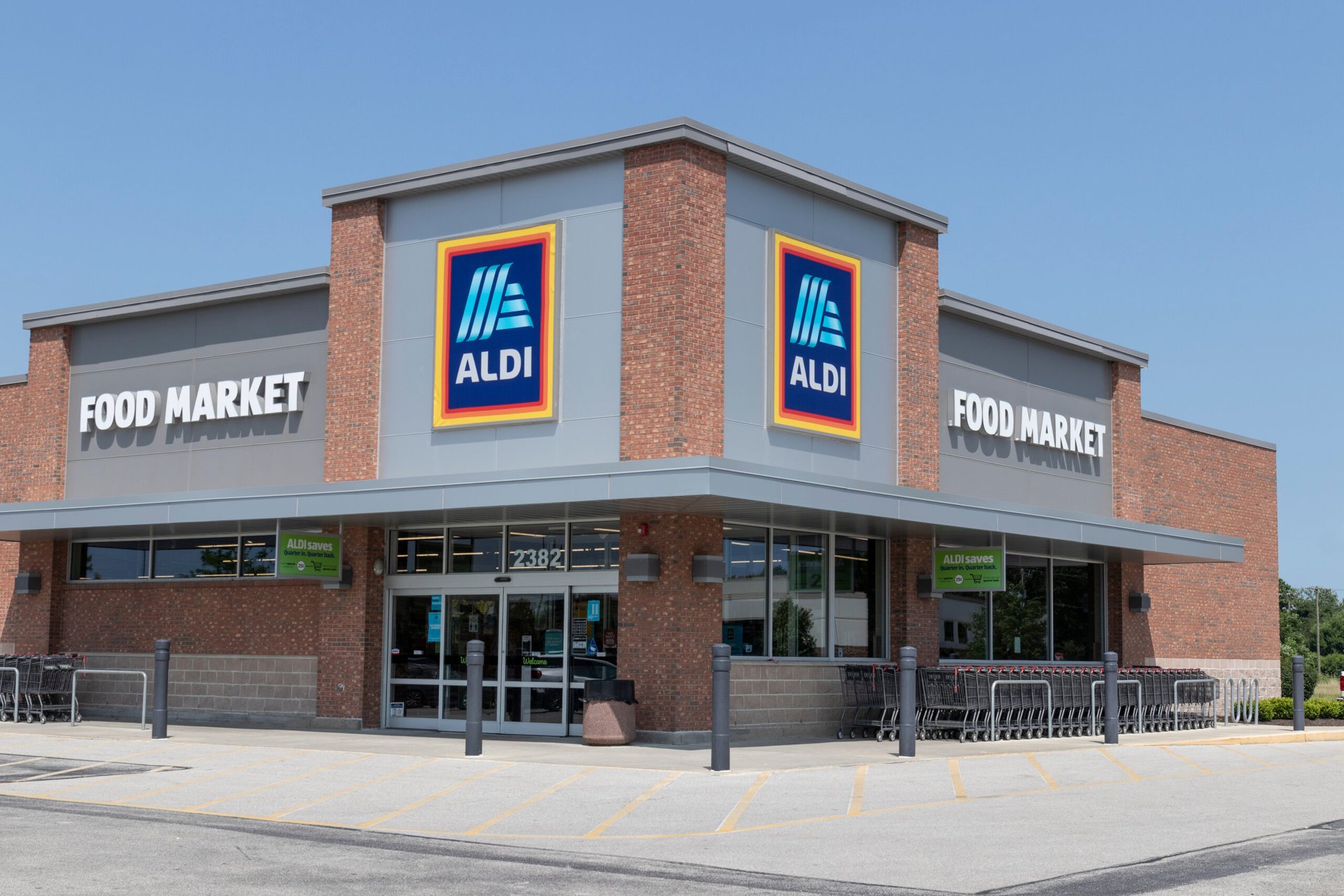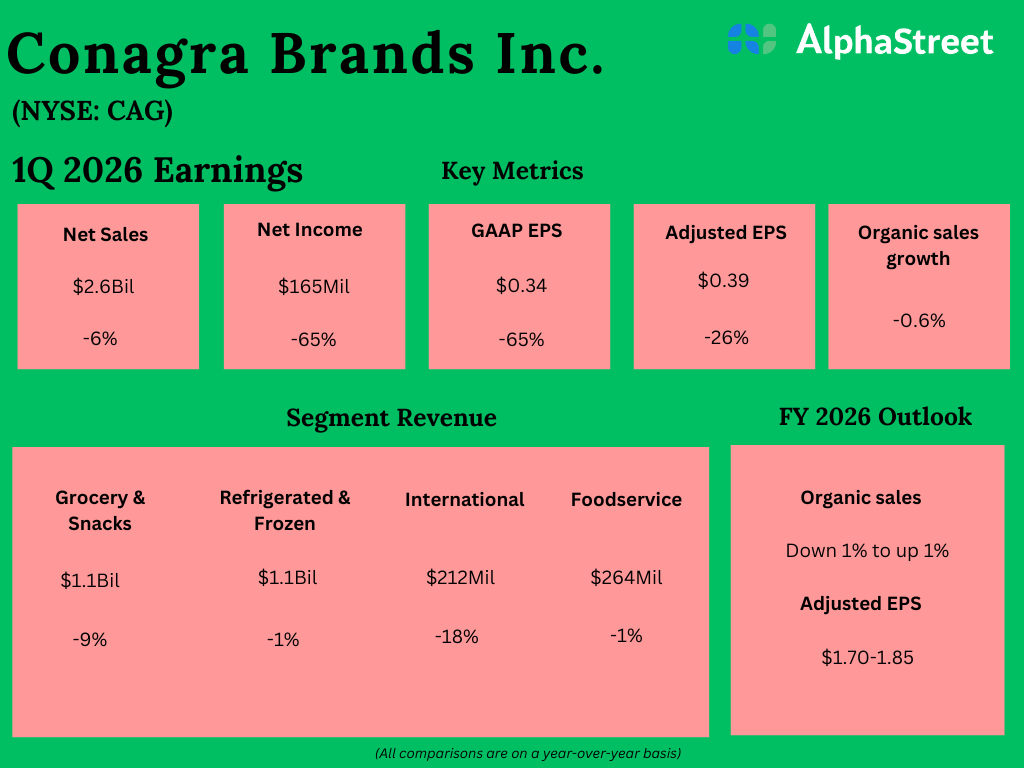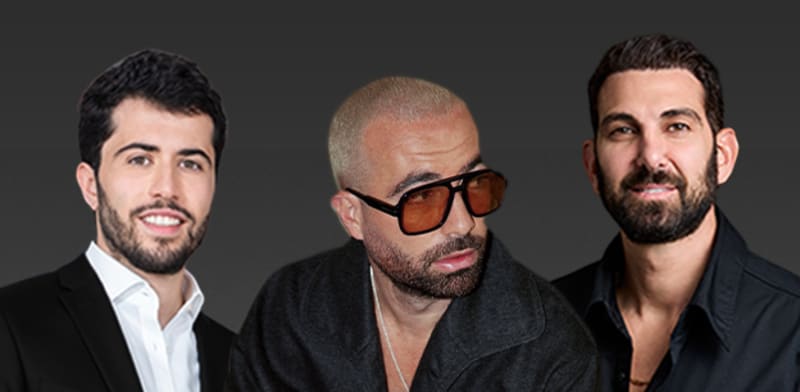This is how to buy rental properties on a lower salary ($50,000 or less per year) in six steps.
If you think you need to be rich to buy rentals, you couldn’t be more wrong. In fact, real estate may be the best investment for those who want to go from low income to financial freedom. You can grow your portfolio faster by using loans, get cash flow that can retire you early, and even make hundreds of thousands completely tax-free.
We’re going to share multiple strategies you can use on a lower income to get your first property for as little as 0% down.
Dave is also highlighting three real estate investing strategies that beginners with little money can use to maximize their investment the most. This means you could turn one investment property into multiple, supercharging your investment so you can repeat it and become wealthier faster, regardless of how much you make at work.
Listen, you DON’T need to make six-figures to buy your first property. This is how you do it with half of that.
Dave:Do you think you can’t invest in real estate because you have a lower income wrong? It is not only possible to invest in real estate, but I think it’s the best way to improve your financial situation if you’re at the lower end of the income ladder, even if you only make $50,000 per year as an example, there are financing options, government programs and investing strategies specifically designed to help you get into your first real estate deal and progress towards financial freedom. From there. Today I’ll break down why investing in real estate makes sense even if it seems unachievable. At first glance, I’ll share which strategies to focus on if income is your main barrier to entry and I’ll share a few programs to check out that could be a total game changer.
Dave:What’s up BiggerPockets community? I’m Dave Meyer and welcome back to the BiggerPockets Real Estate podcast. Today we are tackling one of the most common questions I hear from our community. Basically, I want to start investing in real estate, but I’m only making $50,000 or less per year. Is it even possible? And lemme just tell you right off the bat, the answer is absolutely yes. In fact, some of the most successful investors I know started with modest incomes and limited capital, and today we’re going to break down exactly how you can get started even on a tight budget. First, I’m going to share seven different funding options to consider if you have a low income. Then I’ll talk about my favorite investing strategies for people who are capital constrained and I’ll finish up the episode by going sort of step-by-step through how to take action on your first investment.
Dave:So if you’re making $50,000 or even a little more than that, this episode is designed specifically for you. Let’s dive in. We’re going to start with talking through different funding options because we need to get this big question out of the way, right? I’m sure there are a lot of folks who are on the lower end of the income spectrum thinking that they want to get into real estate investing but just don’t know how to get the capital and how to finance these deals because real estate is amazing, but it is a very capital intensive business. You do need money to get into this business, but the good thing is that real estate investing is not necessarily like buying a traditional home. You don’t actually have to put down 20% of the full purchase price to acquire the asset, and there are actually seven different options to consider if you want to invest with a lower income and not everyone is going to work for every investor.
Dave:That’s why I’m giving you a couple of different options here. I’m not going to go super into depth into each of them. I just want to show you that there are possibilities out there if you’re willing to search and figure out which one of these actually works for you. Option number one is an absolute classic. It is an FHA loan and this is absolutely perfect for folks on the lower end of the income spectrum because they were designed specifically for low income Americans to get them into the housing market. So if you are doing a house hack or potentially even a live and flip, I’ll explain that in a minute. This is a really powerful strategy. Now, it is important to know that FHA loans are only available for people who are owner occupied. You have to live in the property that you buy with an FHA loan.
Dave:So house hacking or live in flips really are the only options here. You can’t just go out and buy a duplex, rent it out to two people and use an FHA loan. But for people who are just getting into the game and have a lower income owner occupied strategies like house hacking and live in flips are two of if not the two absolute best strategies to get started. So these sort of work really well together. The reason FHA loans are so great for people who are getting started with a lower income is that you can actually put as little as 3.5% down on a property. So I know the traditional amount that most people hear is putting 20% down, but this is a government sponsored program where you can put as little as 3.5% down. So if you’re talking about buying a $300,000 property, for example, your down payment will be close to $10,000, which is a lot easier to stomach and get together than $60,000 like you would be putting down if you put 20% down.
Dave:Or as a real estate investor, often you put 25% down and then in that case you’ll need $75,000 to put down. So it’s a lot better. The other really incredible thing about this is when you put 3.5% down, you don’t have to just buy a single family home, you can actually buy a two, three or up to a four unit property, and that’s sort of why it works so well for house hacking because you can live in one of those units and rent out the other one, two or three units that you get. It’s also great for people who have relatively lower credit scores because credit scores for an FHA loan can be as low as five 80. You definitely still want a higher credit score because the higher you go in your credit score, the better rate you’re going to get. But if you have low credit, these options are still available.
Dave:The debt to income requirements can be up to 57%, which is much more lenient than a conventional loan. You’re allowed to get gifts for a down payment if that’s something available to you and you can actually count some of your expected income up to 75% of it towards your qualifying income. So all of these things together make it an incredibly powerful way for lower income folks to get into the real estate investing game because it addresses head on the hardest part of getting in the game, which is figuring out that money for your down payment instead of putting 20 or 25% down, put as little as 3.5% down with an FHA loan. So that was option number one. Option two is a different but somewhat similar approach to getting into the game. This is using a conventional loan with low down payment options. There are some more traditional banks now that allow you to put three or five or 10% down, specifically usually for first time home buyers.
Dave:So again, this is going to work for people who are going to embrace the many, many benefits of owner occupied strategies like house hacking or the live and flip. With a lot of these options, you don’t necessarily have PMI private mortgage insurance, FHA loans. One of the downsides I should mention of that is yeah, you can get in with a lower down payment, but there are some additional fees. It’s called PMI on top of your normal principal and interest payments that make your monthly mortgage payments a bit higher and obviously that’s not ideal. It can hurt your cashflow or how much money you’re saving. And so with these conventional loans with low down payment options, you can potentially avoid them. Now there are trade-offs because they probably have higher interest rates. The underwriting might be a little bit more strict than some of the things I mentioned in the FHA loan, but don’t overlook these because more and more lenders are offering these kinds of financing and it can be a really good way for low income folks to get in the housing market.
Dave:Our third approach for low income people to get into the real estate gain is a little bit different tactic, which is partnership strategies. If you can’t get together enough capital to put a down payment on your property either putting 20 or 25% down or for some folks, it’s not going to even be possible for three or 5% down and that’s totally okay. This is a similar situation for how I got started. I really had no capital to put into my first deal, and so I used a partnership strategy and this is a very, very common way for real estate investors to get into the game. I know a lot of people put on social media that they’re buying all these properties. A lot of those people are using partnerships. This is very common. Not many people have all of this money that they can invest into real estate right away, so they go out and find someone to partner with.
Dave:Now, there’s tons of different formats for partnerships, but I’d say there’s basically two different approaches that you can consider to get off the bat. One is a down payment partner or partners if you don’t have the capital to go out and make this down payment, see if you can find someone in your network who does have an interest in real estate investing who wants to partner and support you and can contribute some or all of that down payment. Now you should mention it doesn’t just need to be down payment. You’re also going to need closing costs. You should also have cash in there, but basically find someone who can bring the capital that you need and then your job in that deal is to go find a deal, operate that deal successfully and create a successful partnership. Another way to do it is maybe you don’t have great credit or you don’t work a W2 job, so you can actually go find a partner who maybe does have a credit and who can qualify for finance or has a higher debt to income ratio.
Dave:That’s another form of partnership that you can go out and seek. So whether you want to call this private money or partnering, whatever it is, the idea here is go out into your network and to be honest with you’re first getting started, it’s probably going to be friends and family. Go see if you can raise some money from friends and family to get into your first deal. Now if you don’t have friends or family that can provide that capital, totally understand a lot of people are in that situation. You can go and look for partnerships or money outside of that circle, but I just want to be realistic that that is a challenge if you’re going to partner, looking first to friends and family is going to be the easiest way to do that. If you need to get pulled together 2, 3, 4 different partners to get that first deal, that’s okay.
Dave:For me, I think the most important thing is to get into that first game. I had three partners on my first deal, and again, this is a very normal way to get into real estate investing. Number four, our creative and seller financing. When you don’t have enough capital to put down to buy a property, you can look into things like seller financing if you haven’t heard of this before. Basically when the owner of a property doesn’t have a mortgage on their property, and that’s actually about 40% of people right now, you can go to these people and see if they would be willing essentially to be the bank for you. So instead of buying your property with a mortgage and making mortgage payments every month to Chase or Wells Fargo or whatever, you actually just pay those monthly payments to the seller. And although you’re still going to have to pay something every month, the terms of that loan are very flexible.
Dave:Basically, whatever you can agree to with the seller is possible. The interest rate is entirely negotiable. The down payment is entirely negotiable. The amount you pay for the property is entirely negotiable. So if you’re one of these people who doesn’t have capital, you don’t want to do a partnership looking for seller financing can be a great option. Now it’s worth mentioning not every seller wants to do this and you do need to make it worth the while for the seller. I had someone approach me about seller financing a deal I own outright right now, and they wanted to put 10% down. They wanted to pay market rate and they wanted a 5% interest rate. I said, why would I do that? I’m going to make the same amount of money and basically lend you money at a lower interest rate than I can make elsewhere.
Dave:So you have to remember that the seller is not going to be doing this out of the kindness of their heart, and so sometimes you need to pay a little bit higher of an interest rate. Sometimes you might need to pay a little bit over market comps for that property in order for the seller to agree to something like this. So don’t expect the world on these kinds of deals. You have to find a mutually beneficial structure so that you and the seller both benefit from this kind of deal financing option number five, don’t overlook these down payment assistance programs. There are so many different state and local municipalities that offer down payment assistance programs specifically to help low to moderate income buyers get into the housing market. Oftentimes these are grants that don’t need to be repaid. They’re just money that you essentially get for free.
Dave:Sometimes they’re structured in the form of zero interest loans for down payments and closing costs. Sometimes you get a credit at closing and you don’t have to come out of pocket for any of these things. There is a huge variance in what is offered, but absolutely look into what is available to you if you live in a city, Google the name of that city and down payment assistance programs or first time home buyer assistance programs and see what they have. Do that for your state as well. Also, ask your lender and ask your agent about them because they absolutely should be familiar with what programs are available in your area and help you figure out how to navigate those things. Option number six is only available to certain segments of the population, but it is an amazing tool for anyone who has served in the military.
Dave:There is something known as a VA loan. This is for military veterans or active military, and it offers zero down payment options. That’s right, you can put $0 down if you’re active military or a veteran. There is no PMI like there is with an FHA loan that saves you hundreds of dollars per month. You still get competitive interest rates. They’re often better than FHA loans and just like an FHA loan, you can buy up to a four unit property as long as you’re going to do the owner occupied thing. So this is an awesome option for anyone who qualifies for it. And similarly, our seventh and last financing option is USDA Loans for Rural Investment Properties. This is another government program that allows you to put sometimes zero down. You get below market interest rates. These properties do need to be in rural areas. They need to be designated by the USDA to be in certain areas, but if you are looking to buy a property in those areas and you meet the other qualifications, USDA loans can offer you a 0% down way to buy your first property.
Dave:So those are our seven options for low income folks to look for if they’re trying to get their first real estate investment. And like I said, not everything is going to work for everyone, but the key takeaway here is that there are multiple different financing paths available to you that honestly higher income investors can’t even access. So your job is to look at the seven different options that I just outlined here and figure out which of these works for you. You got to do more research. We have tons of resources on BiggerPockets. You can go learn more about each of these in more detail, but figure out which one is going to work for you because it’s not going to work for every single person. But I bet for 80 90% of people listening to this podcast, one of these options could actually work for you. So go check these out. Now I need to turn our attention to which strategies, which types of deals work for lower income investors. We’re going to get to that right after this quick break. Stay with us.
Dave:Welcome back to the BiggerPockets podcast. I’m Dave Meyer, sharing strategies and tactics that lower income investors can use to get into the real estate investing game. We talked about seven different financing strategies before the break, and next I want to touch on two investing strategies that can be really effective even if you’re only making $50,000 give or take. And again, we have tons of episodes, resources on BiggerPockets that you can use to go dig into these in more detail because I’m just going to provide an overview so that you can select which ones you want to do more research on. The biggest bucket of strategies that work for low income investors are the ones that I mentioned before the break, which are owner-occupied strategies. These give you access to the best financing options like FHA loans, like VA loans, low down payment, conventional mortgage. These are all available if you are willing to do the owner-occupied strategy.
Dave:Now, there are two different ways that you can use occupied and we often talk about one of ’em, but the second one I think is one of the least appreciated overlooked strategies in real estate investing. The first one though is house hacking. You’ve probably heard of this, but basically it’s where you buy a two to four unit property using an FHA loan. You could use a conventional mortgage, but for purposes here, it’s about using a low down payment loan live in one unit and rent out the others, and the rental income from your tenants should cover at least some of your mortgage payments so that you’re saving money every single month. You don’t need to be cashflow positive in these situations. The goal of a house hack is actually to reduce your living expenses as much as possible so you can save up as much money as you can to go out and buy your next deal.
Dave:And this is just an absolutely proven no-brainer model. I have seen people effectively live for free while building equity and learning the landlord business. It’s awesome. And again, the beauty is that you’re using owner occupied financing. If you’re low income, you can put as low as 3.5% down. You’re getting great rates, you’re getting more lenient qualification requirements than a normal investor loan. And plus you get to learn property management, sort of the training wheels for being a landlord while you’re doing all of this. But that is not the only owner occupied strategy that you should consider. There is also the live in flip strategy. Live in flip is basically when you flip a house, but it’s the house that you are actually living in. And there’s a really key difference here because when you go out and flip a home in a traditional way, you are using hard money most of the time, which is super high interest rate debt.
Dave:Usually it’s 10, 12 up to 15%. Sometimes you can put 10 or 20% down, but you’re still making a large down payment. You have to pay for materials somehow to actually go and flip a house, whether you’re taking out a loan or paying for that out of pocket. And the whole game of doing a flip is doing it quickly to reduce all of your holding costs, like your loan payments and your taxes and your insurance payments. So you want to do it quickly. The live and flip though takes a lot of that pressure off because if you buy correctly, you can use one of these owner occupied types of loans, maybe a VA loan or a low down payment, conventional mortgage option, and you can take as long as you really want to do the flip. But basically you should give yourself about two years because there’s this really awesome part about the live and flip, which is that if you live in that property for two years or more, you have to basically live in it for two out of the last five years that all of the money that you make on that live and flip all the profit is actually exempt from taxes.
Dave:You do not pay capital gains tax on that, and that is incredibly powerful. So basically you could do the live in flip and then hopefully generate enough equity, go and sell it, and then when you do that, you can either go buy a house hack or you can buy a rental property or you could just go and do another live in flip. And I love this option again because it has a lower down payment option for lower income investors. Now, the types of properties that you’re going to need to do this for will change because for an FHA loan, there are specific requirements for the house that you need to hit, and oftentimes it can’t be in really bad shape to get an FHA loan. But on the flip side, there are other government programs that allow you to borrow the money that you need to renovate a home like a 2 0 3 K loan.
Dave:Awesome option for people here to consider if they want to do a live-in flip strategy. Or you could just go out and look for a conventional mortgage with a low down payment option, use that to purchase the house and then either come out of pocket to buy the flip or potentially partner with someone to buy the materials and pay for the labor that you need to do a flip. But I would highly recommend considering this if you’re handy, if you’re willing to get your hands dirty a little bit, this could be an incredible wealth building strategy, especially early in your investing career when you need to build up equity that you can use to go out and buy subsequent investments. This is a really good way to supercharge your equity growth early in your career. So those are two great strategies for low income investors to get started.
Dave:The third is the Burr strategy. If you haven’t heard of Burr, it stands for buy, rehab, rent, refinance, and repeat. And it is basically a strategy that allows you to recycle at least some of your capital into multiple deals. The idea is you go out and buy a property, you have to put some money into that deal as a down payment. You need to put some money into that deal to renovate the property. But once you’ve built up equity and improved the value of your property, you can refinance it, take some money out of the deal and use it for your next property. This is why Burr is so popular, especially for people who have limited capital, but it’s honestly just popular for everyone because it allows you to be very efficient with the capital you want, and that’s valuable to everyone, whether you’re a low income investor or a super successful investor.
Dave:Now you can sort of do a burr with an owner occupied hybrid, but if you were going to do a burr without owner occupied, you are going to need some capital. This isn’t a no money down strategy. You still need to find money somewhere to go purchase this property and pay for the renovation. You can do that through some of the financing options I mentioned above. A common way to do this would be through partnerships, but you are going to need some capital. But the reason I like this is because Burr, if you can get that first injection of capital, you might not just be able to buy your first property. That might help you get your first and second property or your first, second, and third property because it’s a very efficient use of the capital you have. So I really recommend lower income investors learn about the Burr strategy and see if it’s something that you can realistically pull off.
Dave:So those are my three favorite strategies for low income investors. Of course, you can do other things. You can go out and buy a traditional rental. You can go out and buy a short-term rental or a midterm rental, but you’re going to need a partner, right? And if you don’t have the money, you’re going to need to go out and find someone who does to buy those kinds of deals because either you’re going to owner occupied and maximize all the programs out there for owner occupied people or you’re going to have to partner. It’s just one or two of those things. I know people overcomplicate this and come up with all these different strategies, but you’re going to have to do one of those two things if you don’t have the capital to just go out and buy rental properties on your own, and that’s okay. This is what everyone does, so don’t think this is some unusual way to get into real estate investing. This is probably the most common way to get into real estate investing. That’s why I know that people listening to this can make this work for them because it’s worked for so many other investors in the past. Now that we’ve talked about financing options and strategies, let’s just talk step by step, what do you do to go out and land that first deal? We’ll get into that right after this quick break.
Dave:Welcome back to the BiggerPockets podcast. I’m Dave Meyer talking about how to invest in real estate on a lower income salary. So $50,000 give or take. Before the break, we talked about seven different financing options you can use to get into the game and some of my favorite approaches for low income investors to start their career with. Now that we’ve done those, let’s just talk step-by-step, action plan. What do you do? Because I get it, if you don’t have a ton of capital get started, it could be really daunting to look at the price of homes and think, how can I actually go out there and do it? So we’re going to go step by step. What do you do? Step number one, and this isn’t what I recommend for everyone, but for lower income investors, step number one is go talk to a lender and understand your financing options.
Dave:This is something so many people just skip over. There are tons of people who reach out to me almost every day saying, I don’t know if I can afford a home. I don’t know if I can get a house hack. I don’t know if I could do a live and flip. Well, you know how you figure that out. Go and talk to a lender. These are people whose entire job it is to tell you whether you can afford these types of homes, and best of all, it’s entirely free. So if funding is your number one concern, you do not need to go and guess about what you can afford. Go talk to lenders and see what they have for you. I recommend you meet with two or three different lenders and compare programs, and that’s not just necessarily go talk to different brokers. If I were you, I’d talk to maybe two different brokers.
Dave:Just go see someone who will shop around on your behalf and then maybe go talk to two local banks as well. Because local banks or credit unions sometimes have their own programs or will have incentivized to lend in their own communities, and they might have programs to help you out that you’ve never heard of or a broker may have never heard of. So go talk to three or four of these people. If you qualify for things like a VA loan or A-U-S-D-A loan, you definitely want to talk to lenders who have experience with that and talk to these lenders about DOW assistance programs in their area. In my experience, good lenders who specialize in your market should know about this. Now, you might talk to some lenders who are on a national basis, and that’s okay. I’ve used national lenders too, but just talk to a couple local ones and see if they know some things that you can learn about down payment assistance, and as you’re talking to these lenders, do that research about city municipality, regional state level programs that you may qualify for.
Dave:At the end of the day, the goal of this whole step of talking to lenders is to get a preapproval to understand the maximum amount that you can get a loan for because that will set your buy box later in our step-by-step guide so you understand exactly what your budget is for going out and getting a property. This I think is the most important thing that low income investors can do because it takes all the guesswork out of it for I think the majority of people out there listening to this podcast right now, you’re going to find out that you can afford something that actually makes sense, and that’s incredibly empowering and motivating for you to go out and get their deals. When a lender tells you, yeah, I’ll lend you a couple hundred thousand dollars to go get you into real estate, that is awesome.
Dave:So go have those conversations and see what you qualify for. There will be some section of people, it’s small that won’t qualify, and the lender will tell you, actually, your credit’s too low or your DTI is not good enough, and honestly, that’s okay too. You want to know that because at least you are taking away the guesswork of Can I buy this? Can I get into real estate? And you’ll get a very specific answer from the lenders about what you need to go out and do to be able to qualify. Maybe you need to work on credit repair, maybe you need to pay off some credit card debt. I don’t know. But it is better to know the barriers to you getting a mortgage than to just stay out there guessing. So step one, go out there and talk to some lenders. Understand your financing options.
Dave:Step number two is define your long-term strategy and goals. You need to figure out what you’re aiming for because I know especially for people who just really want to get their first deal, you could just say, I’ll buy anything that makes sense, and I totally understand that sentiment. That is how I started in real estate, but 15 years into this, I have recognized that starting with a plan and a strategy actually really helps you go a lot faster than just diving into any old deal. So figure out where you’re trying to go and over what timeline. If you are a long-term buy andhold investor, which is what I think 80, 90% of real estate investors are out there trying to build wealth for the long-term, then I think looking into house hacking or a traditional renter property, if you want to partner with someone, are really good options and you want to focus on getting a defensive deal.
Dave:Now, I know a lot of people out there are saying that cashflow isn’t that important, and that is a worthwhile debate. Personally, I believe that cashflow waxes and wanes in importance depending on where you are in your investing career. But if you are lower income and getting into your first deal, cashflow is absolutely essential, not because it is going to make you rich, not because it is going to change your life instantly and you’re all of a sudden going to retire, but because it reduces your overall risk when you are a low income investor, your goal of your first deal is to get in, hold on, learn, and get a little bit more financially free. If you do not have cashflow, it calls all of that into question because unlike someone who’s say, starting with a ton of money, if they buy a deal that doesn’t cashflow and a water heater breaks and they need to come out of pocket two grand to pay for that, that’s okay.
Dave:But for folks who are low income and trying to get into that, you can’t have that situation that brings in too much risk into your first deal, and so you need to really understand how to analyze deals well, to understand the real metric of cashflow, which incorporates the potential for expenses on things like water heaters and roofs and HVACs and all the other stuff that inevitably breaks. You need to take all that into account and still make sure that you are getting cashflow. That is the strategy I recommend for anyone who wants to be a buy and hold investor and getting in with a low income. Now, if your goal is to just try and make some money as quickly as possible, which might be okay because you want to buy rental properties later without a partner, then I think a live and flip is awesome.
Dave:I actually think anyone who’s willing to take on the inconvenience of a live and flip because it is inconvenient you’re living in a house that you’re flipping anyone who’s willing to do that though, it’s one of the best ways to start, even if your goal is long-term buy and hold because it allows you to build up that equity and buy properties in the future. So you just need to figure out what your goals are, like a one year goal, a three year goal and a five year goal are usually what I recommend to people. If your one-year goal is just get a cash flowing rental, then go out and do a house hack. If your one-year goal is to build up as much equity as possible to buy deals in the future, go do a live and flip. The whole point though of this step is figure out where you’re trying to go over the next five years and back into a plan that works for you.
Dave:Step number three, go educate yourself and do some market research. Once you figured out, Hey, I want to do a live and flip, or I want to buy a house hack and I have X money to spend, which is where you should be entering step three, then you got to go make sure that you can really pull this off by learning as much as you can about these topics. So if you want to be a house hacker, go read the book on house hacking or listen to all of the millions of episodes we have on BiggerPockets about house hacking and how to be successful at it. If you want to be a live-in flipper, go read a book about live and flip or listen to the many podcasts Mindy Jensen has put out about being a successful live and flipper. This is where you just have to be good at being a real estate investor.
Dave:This is true whether you’re low income or high income, you got to learn the skills to make sure that your first investment goes well As part of this education, it’s not just learning the tactics and things you need to do, you also need to do some market research. This is where you have to pick where you want to buy a house because although it is really an oversimplification to say real estate’s location, location, location, there is truth to that old saying that location matters a lot and where you live and flip might be different than where you want to buy a house. Hack might be different than where you want to do a burr, and so you need to find the right market for the strategy that you have selected. Now, all things being equal, you want to invest in your own backyard if you’re first getting started.
Dave:That’s usually my recommendation because that allows you to take advantage of the owner occupied strategies and it allows you to just keep an eye on your deals and get good at managing those deals over time. Now, if you want to partner with someone you can do out of state investing in a low price market, that is absolutely possible too. If you live in an expensive market on a lower income, maybe you need to go invest in the Midwest, you can afford something there, you can absolutely do that, but that’s probably going to take a partnership option because you’re not doing owner occupied, and that’s okay. Just at this stage of the process of buying that first deal, you need to go out and figure out where you’re physically going to buy those properties, tons of resources again that are free on BiggerPockets that you can go do that.
Dave:Step four is starting to get deal flow and analyzing those deals. Deal flow is basically you need to look at a lot of different properties before you go out and select them, and you need to figure out where you’re going to get that deal flow from. For the vast majority of people getting your first deal, especially if you have a lower income, is going to come from a real estate agent. You don’t really have to overthink it that much. Go on biggerpockets.com/agent, find an investor friendly agent and ask them to send deals that fit your buy box. At this point, you should have a buy box decently well developed. You should know what your maximum budget is based on what your lender has told you. You should know what type of property you’re looking for based on the strategy and goal work that you’ve done, and you should know where you want to buy based on your own education and research about different markets.
Dave:So go find that agent, tell them what you’re looking for. Hopefully they can refine your strategy with you and give you some input on what to look for, but figure out what your buy box is and start getting those deals sent to you. Now, a lot has been made in recent years about off market deals, and if you have access to off market deals, great, you should pursue them. That’s a great thing to do, but it is hard to get off market deals if you’re income because a lot of the strategies you use, like sending out mail, putting up flyers or direct marketing, any of these things, they cost money and they cost time and just given where the real estate market is today, more and more good deals are going to be available on the MLS are going to be in front of agents.
Dave:And so for most people, I would recommend that strategy. Start looking at a lot of deals and start analyzing those deals. Analyze as many as you can. Analyze five a day, analyze 50 a week if you have to really get confident in how well you can run the numbers. Tons of resource on BiggerPockets how to do that. I wrote a whole book called Real Estate by the Numbers on how to do that, but we have tons of different webinars. We have all sorts of free stuff that you can check out as well if you want to get good at analyzing deals. But the main thing I want you to remember, any deal that you look at as a new investor, if you’re not doing a living flip, if any sort of buy and hold, whether it’s a burr, it’s a house hack, it’s a traditional owner occupied, it has to cashflow.
Dave:Just don’t look for a deal that doesn’t cashflow. If you are low income, that is too risky. You do not want to have to come out of pocket to float your deals. You want to make sure that after maintenance costs are factored in after vacancy costs are factored in after capital expenditures are factored in. Those are things like those big ticket items like replacing your water heater or your roof every decade or so. Those things have to be factored in and after you factored them all in, it has to cashflow within the first year or do not buy it. That is the best advice I can give you for a low income investor because you’re in a situation where you’re not going to be able to afford to pay for a $5,000 water heater if it breaks in the first month. So you really need to factor all that in to make sure you are not going to be putting yourself in a bad personal financial situation by buying these deals.
Dave:And I promise you, these deals absolutely do exist. You just need to be disciplined to go out and find them. It might not be on the first deal you analyze. It might not be on the 20th deal you analyze. It might be the hundredth deal you analyze, but this is the job of an investor. If you are expecting that you can come into this with low income and just find a deal in the first day or two, I’m sorry, that is not what’s going to happen. If you are coming into this with a lower income, you’re going to have to hustle a bit to figure out where these deals come from, and this is how you hustle. Look at a ton of deals, get very good at analyzing deals. These are skills that anyone can learn. You get very good at it, and that’s how you protect yourself and get into the game.
Dave:That’s step five, step six. Once you’ve done that, you just start making offers. Make offers. Talk to your agent, figure out what you are willing to pay for different properties. Be willing for people to say no to you. That’s okay. Figure out what you’re willing to pay for properties. Negotiate hard because we are in a buyer’ss market right now. This is a big change from where we’ve been over the last couple of years, and buyers actually have leveraged negotiating power right now. So the way you should approach these offers is you don’t want to be greedy, don’t insult people or make stupid offers, but go out there and make offers that are mutually beneficial and you think actually reflect the value of the property to you as an investor and stick to it. Stick to it. Be willing to walk away from deals that don’t make sense.
Dave:Just keep going until you find the one that works for you. And then step seven is just scale and repeat. Once you’ve done this, once, everything gets a lot easier. If you do a live and flip, you’ll have equity to go buy your next deal. If you do a house hack, you can save up enough money to go do a second house hack a year later. If you do a partnership in a bur, you should be able to efficiently recycle some of that capital to go get your next deal. Or if you want to partner, once you’ve done one deal, the amount of people who are going to be willing to work with you and partner with you and lend to you is going to go up exponentially. The difference for me as someone who does private money lending difference between someone who’s done no deals and one deal is pretty considerable, and the more experience you get, the more options are going to be available to you.
Dave:So once you get that first deal, everything will get proportionally easier for every deal you do from there. So those are our seven steps. Just as a reminder, step one, talk to lenders and understand your financing. Step two, define your strategy and goals. Step three, do the education and market research. Step four, talk to an agent and start analyzing deals. Step five, make offers and get your first deal. Step six, scale and repeat. That’s it. And before we get out of here, I hope what you are taking away from this episode is that your income doesn’t define your potential as a real estate investors. Some of the most successful investors I know started with less than $50,000 per year and built incredible wealth through real estate. The key is to accept and to start where you are. Use the tools available to you like FHA loans and house hacking, and focus on cashflow over appreciation. Do not try to get rich. Quick focus on building wealth steadily and systematically. Your first property is always the hardest, but once you prove to yourself that you can find finance and manage a rental property, the second one becomes easier, and the third one is easier still. That’s what we got for today’s episode. If you found this helpful, make sure to leave us a review and share with anyone who would benefit from it. For BiggerPockets, I’m Dave Meyer. See you next time.
Help us reach new listeners on iTunes by leaving us a rating and review! It takes just 30 seconds and instructions can be found here. Thanks! We really appreciate it!
Interested in learning more about today’s sponsors or becoming a BiggerPockets partner yourself? Email [email protected].





























